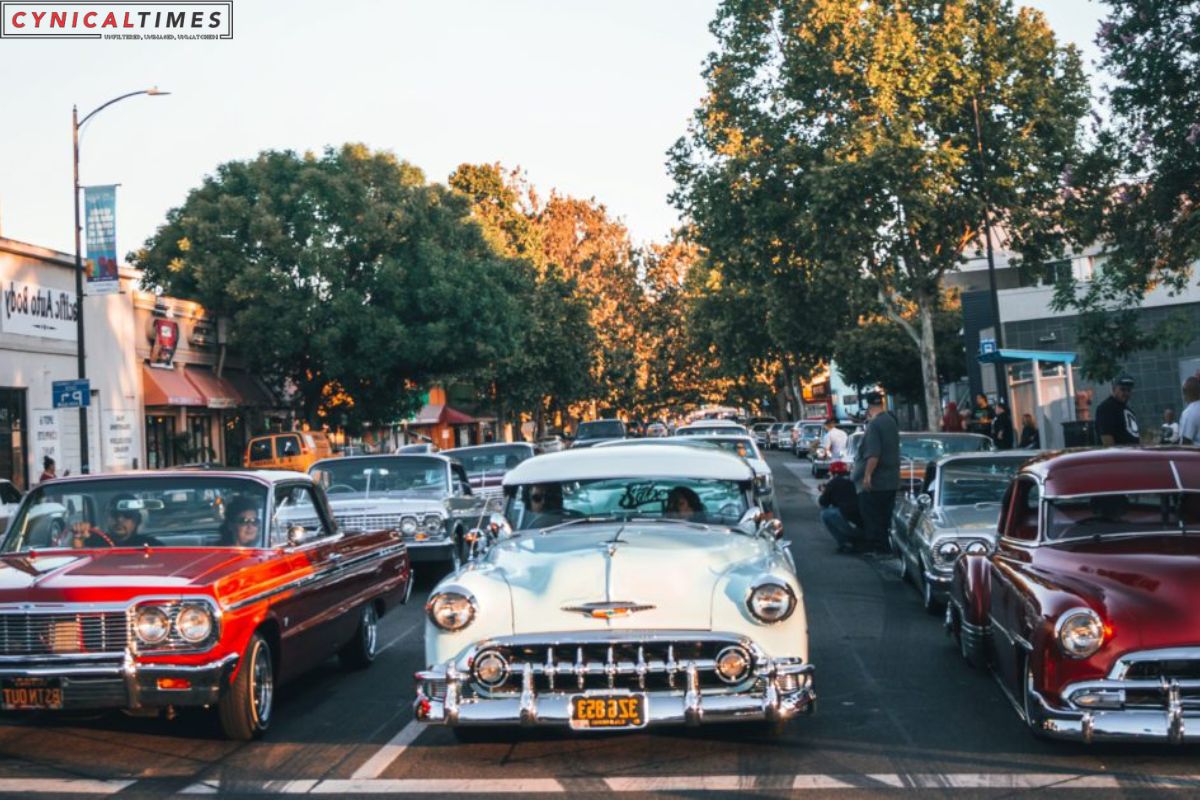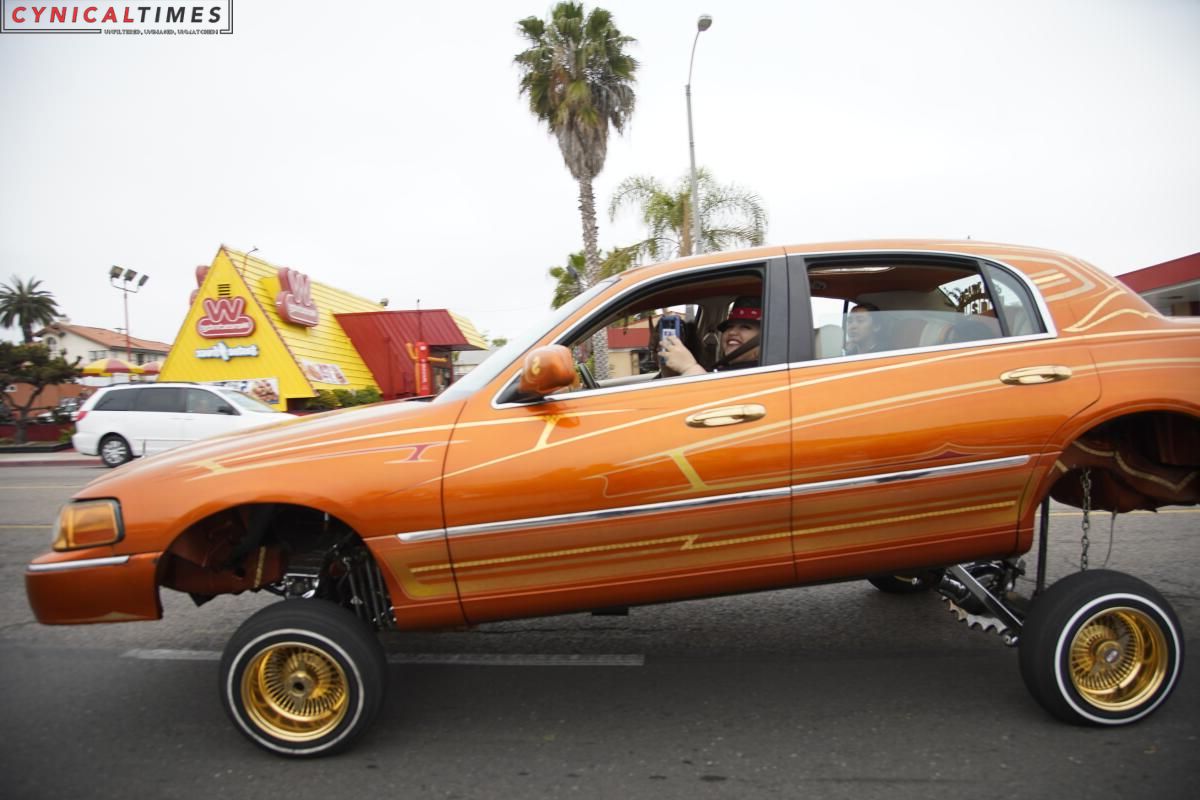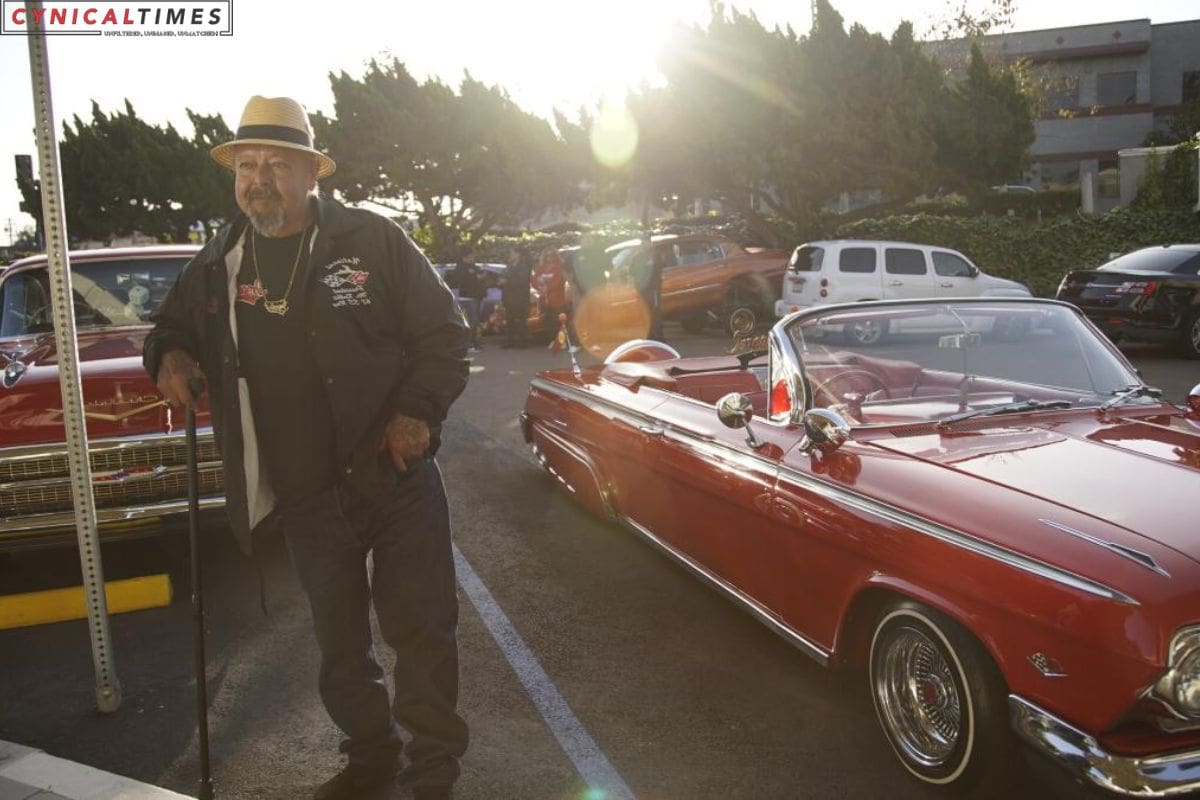Cruising Toward Freedom: A radiant line of automobiles shimmered in the sun as they cruised just inches above the asphalt, gracefully gliding past a prominent “NO CRUISING” sign at a bustling park near downtown Los Angeles earlier this month. The resonant bass notes thudded from some of their speakers.
Other vehicles bobbed up and down, their drivers grinning as they meandered past taco and ice cream vendors, waving at the enthusiastic onlookers.
This predominantly Latino community of car enthusiasts had gathered to spend a Sunday with friends and family, but to showcase their vehicles, known as lowriders, some were technically transgressing the law.
Lowriding, the art of customizing classic cars by lowering their suspensions and sometimes adding hydraulics, has been an integral part of California’s car culture since the 1940s.
Lowriders’ influence on popular culture found its expression in the iconic hit “Low Rider” by WAR in 1975.
Nevertheless, in the ensuing decades, municipalities and counties imposed cruising bans, often stereotyping lowriders as associated with crime and gangs. These laws, decried by lowriders as discriminatory, have long hindered their ability to showcase their cars without the fear of citations or towing.
San Jose, formerly known as the lowrider capital of California, imposed a ban on these cars in 1986, creating “no cruising zones,” a move often labeled as racist and prejudicial.


Also Read : Astronaut Jose Hernandez Inspiring Tale: From Fields to the Stars
San Jose finally overturned its ban on lowriders in 2022, and on September 1 of this year, city officials joined car enthusiasts in celebrating the inaugural Annual Lowrider Day with cruising cars, speeches extolling Latino culture, and throngs of spectators.
On October 27, Governor Gavin Newsom signed a bill into law repealing these bans and lifting a state prohibition on significant modifications to a vehicle’s clearance from the roadway.
“We’re not gangsters, we’re not looking for trouble,” remarked Rene? Castellon, the president of the Elegants Los Angeles Car Club, who proudly drives a red 1965 Chevy Impala adorned with a windshield sticker declaring, “CRUISING IS NOT A CRIME.”
For months, Castellon and thousands of other lowriders across the state advocated for the bill, introduced in February, and passed with robust bipartisan support in both the State Assembly and Senate. The new law will take effect on January 1.
While Sacramento and National City joined San Jose in lifting the bans, in other parts of California, lowrider modifications and cruising, often defined as driving past the same spot multiple times within a designated timeframe, remained illegal.
In Los Angeles County, violators faced fines of up to $250. Although these rules were not consistently enforced, some lowriders recounted being instructed to move by the police, receiving citations, having their cars impounded, and enduring unfair treatment simply for indulging in their beloved pastime.
“I lost my license a couple of times,” lamented Alejandro Vega, a custom car builder based in the San Fernando Valley, whose work has earned numerous awards and been exhibited at the Louvre.
“They were stereotyping lowriders,” Vega, also known as Chino, said of the police, who he claimed impounded his car. “You could drive past 20 times in a regular car, and they would never stop you.”
Vega, who immigrated to the United States from Mexico as a teenager, was immediately captivated by lowriders because of their uniqueness. “Anyone can drive a Bentley, but not just anyone with money can drive a ’59 convertible,” he explained. “It’s in our blood.”


Also Read : Astronaut Jose Hernandez Inspiring Tale: From Fields to the Stars
By most accounts, lowriding began in California among young Mexican Americans, who took a symbol of middle-class Americathe automobileand gave it a distinctive twist. They began restyling more affordable older cars with elegant upholstery, chrome and gold accents, powerful sound systems, and, in some cases, hydraulics that could raise the car off the ground.
These attention-grabbing creations, designed to be showcased “low and slow,” also became symbols of defiance that later spread to other marginalized communities across the United States and even to Japan.
During the postwar economic boom of the 1950s, the movement continued to flourish with a surplus of older, more affordable cars, noted John Ulloa, a lowrider culture expert and history lecturer at San Francisco State University. “Necessity is the mother of all invention,” he remarked, highlighting the ingenuity of those who transformed “something beautiful out of something that was somebody else’s trash.”
However, over the years, lowriding became a target of politicians who associated it with urban crime. In 1988, state lawmakers passed a bill allowing local governments in California to enforce cruising bans. Assemblyman David Alvarez, the San Diego Democrat who introduced the bill this year to end the bans, argued that they unfairly targeted a marginalized community and gave the police “another tool to intervene, to stop, and to question individuals.”
Lori Maldonado, a second-generation Chicana, recounted that her lowrider community had been playing a cat-and-mouse game with authorities for as long as she can remember, continually shifting from one parking lot to another to evade law enforcement.
“We’ve been hassled by the police ever since I was little,” Maldonado said, recalling how her family would load sandbags and heavy house speakers into their cars to weigh them down and lower them closer to the ground.
She acknowledged that while some lowriders had previous gang affiliations, many had reformed and saw the hobby as a means to express themselves and spend time with friends and family. This is
Our Reader’s Queries
Is sailing to freedom New Bedford and the Underground Railroad?
Discover the untold tales of the Underground Railroad’s maritime aspect with Sailing to Freedom. This captivating read sheds light on the often-overlooked role of African American waterfront labor, both paid and unpaid. Delve into the lesser-known stories and gain a deeper understanding of the impact of these individuals on the fight for freedom.

